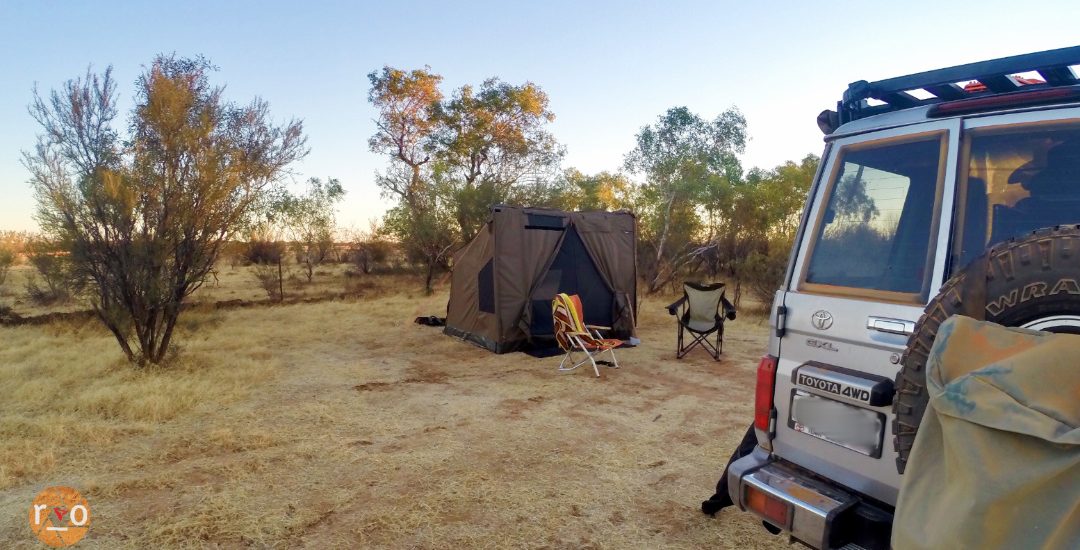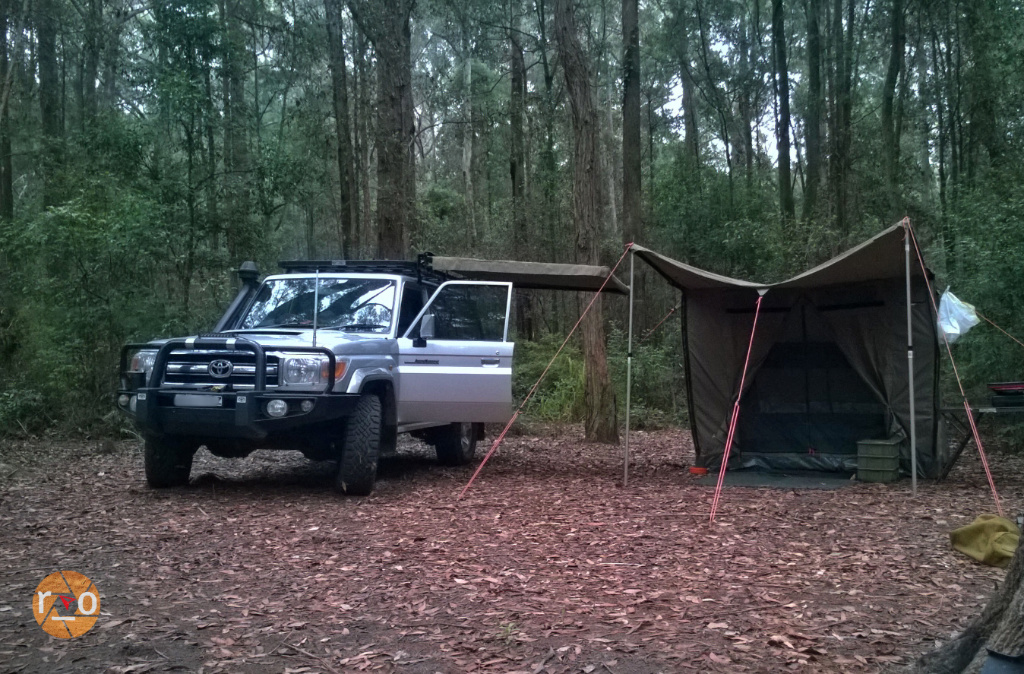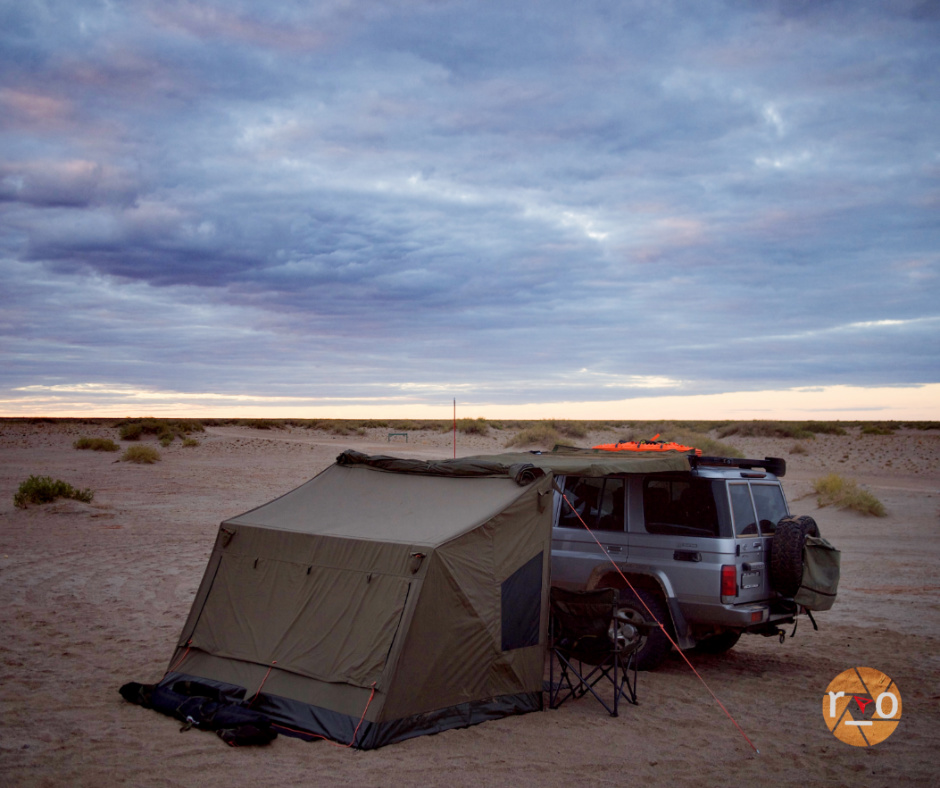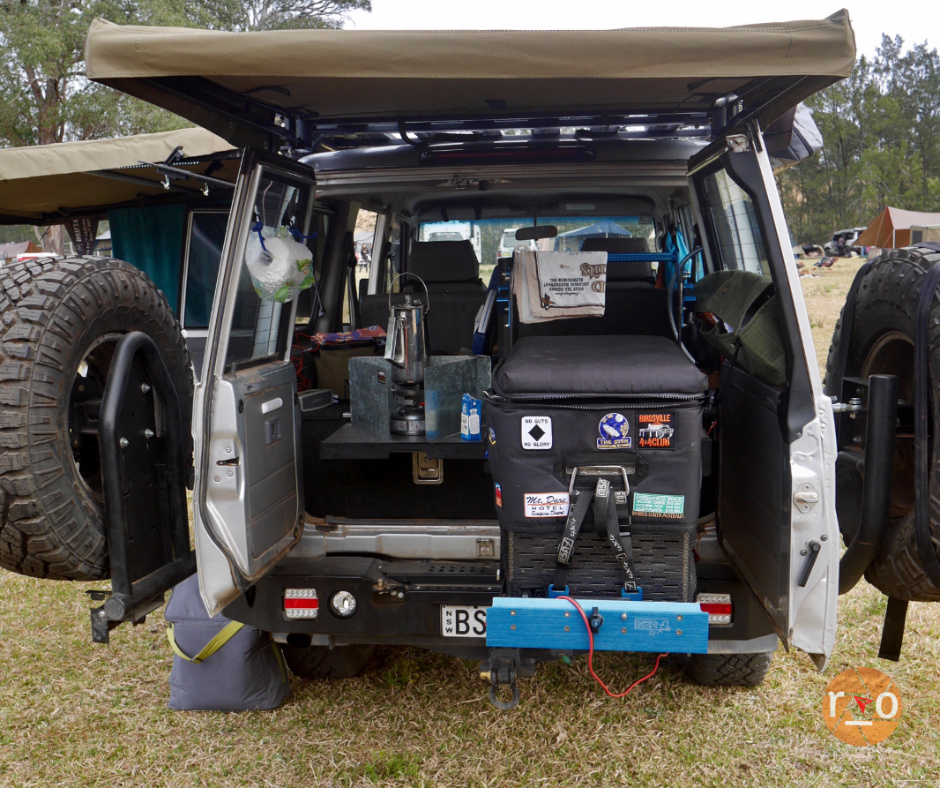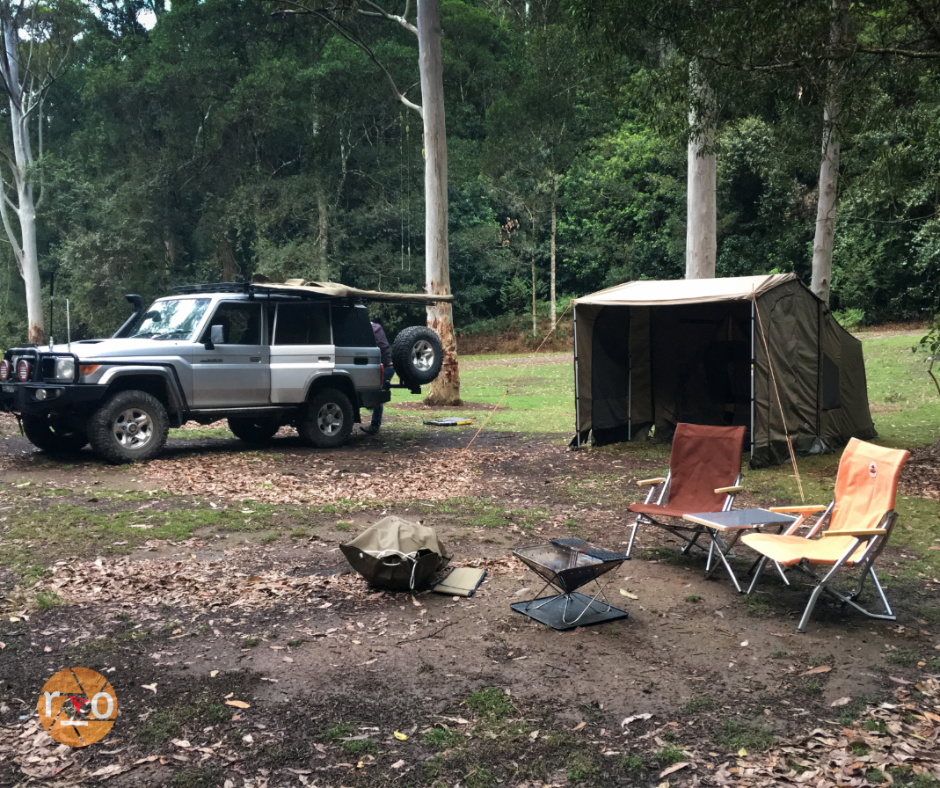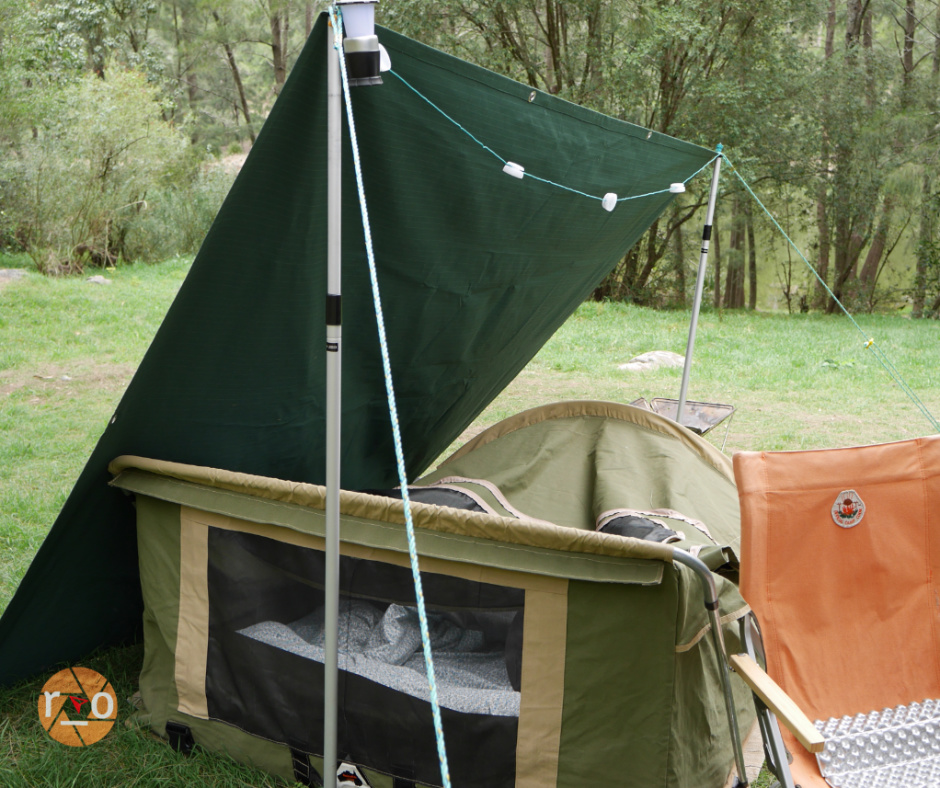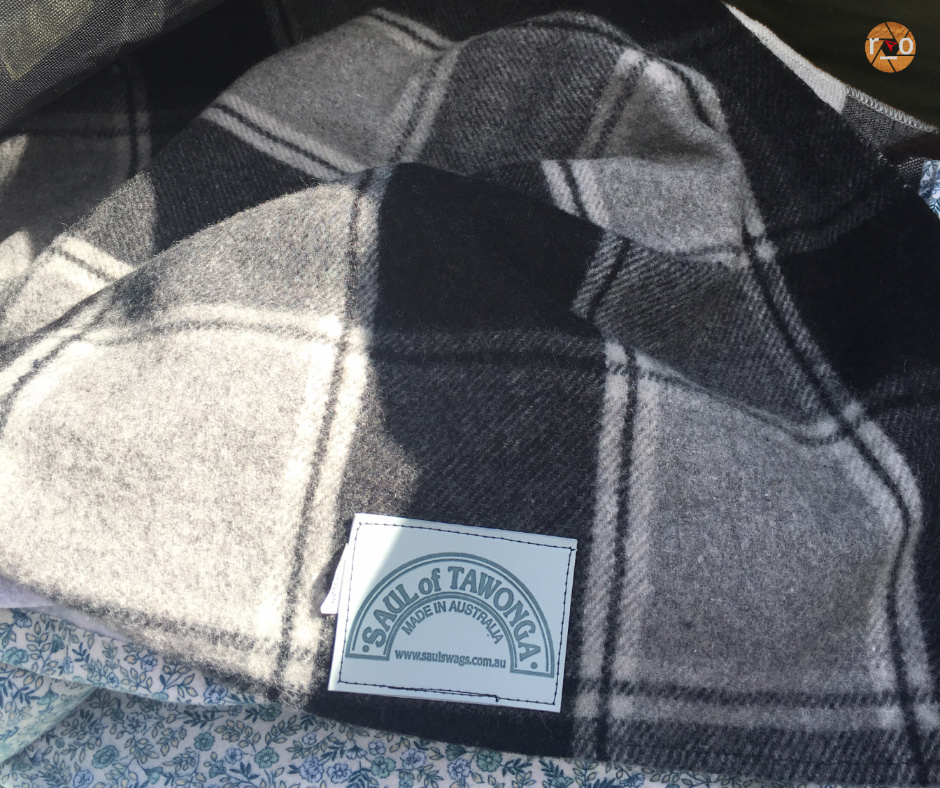Just as any point of a Three Corner Jack (noun: Emex australis …a nasty prickle) will hurt, there are three elements to camping and each are as potent as the other. Food, Shelter, Safety.
In Food for Thought I introduced my casual food obsession and how it is often translated into quick, clean(ish) and easy fodder on and off the road. But there is little comfort beyond your mitochondria (noun: an organelle that converts energy in and for our cells) if you have no shelter to cook under, eat on, or a bed to slumber in during your carbohydrate coma.
Shelter is a relative thing, and personal. And our learning process has been just that. Step outside and your senses tighten on the elemental.
I grew up sitting out the foul weather in the tent or swimming in the water or simply riding my bike, are we not more tolerant as kids? I recount desperately holding in a hypothermic urge to urinate late at night camping at Mudgee, or one occasion a cyclonic storm hit Yamba and we were evacuated to the 4WD whilst Mum and Dad literally held the tent down from blowing away through the night.
All grown up, camping in a hiking tent in sub zero temperatures or huddling around a spluttering butane stove, priorities are drawn in the proverbial sand.
Almost 6 years ago we bought our Otent RV3, the hiking tent whilst small and light, 1.8kg was adequate to sleep in but not much else.
We were loving camping and didn’t want the weather to dictate our escapes. The RV3 packs up just as small as the RV2 but offers a full 2.4m width and 2.0 depth, a canvas palace by comparison. There is space for mattresses, a small table, the dog and the bird (everyone are avid campers at our place) inside.
After a few years we bought the side walls, it was actually a few summer monsoon like showers that convinced us. Applied with Velcro and zipper these doubled our real estate of shelter and gave us somewhere private to hangout. The pup preferred this set up too as it gave her 3 walls to throw herself at instead just the tent door.
That being said, we haven’t actually taken the side walls on our longer roadtrips. During our windiest sojourn, Halligan Bay and Birdsville compete for that title, we butted the Oztent up against the end of our Hannibal side awning (at the time they were around equal height) and did not bother with the Oztent’s own awning. This gave us the most wind resistant setup. The vehicle acting as a windbreak and without poles, the bulletproof Hannibal side awning gave us the added shelter to cook and sit.
The awning was one of the first purchases for the LandCruiser, selected for its reputation as the strongest awning NOT on two legs. Legless, made in South Africa. Heavy Duty. It offers 1.9m of shelter, and we can adjust the vehicle position to suit.
This was one of the reasons why a second awning was finally added to our kit, we considered replacing our current Hannibal side awning with a 270, but after years of good service surely someone supply the correctly sized rear awning we thought we needed. But would it help?
After another 6 weeks on the road, in varying conditions of heat and cold, the common denominator was this; we were cooking at the rear of the vehicle, easy access to the fridge, sheltered by the barn doors. It was decided, and we ordered a custom, cut to size, Hannibal awning. Now made in Australia.
With the barn doors open can create a sheltered location to cook or prepare or boil a billy and access the fridge. During heavy rain it obviously doesn’t create the 270 degree shelter but the rear of the vehicle is protected so the doors can remain open.
Camp comfort extends beyond the shelter above. After two attempts with a modern camping chair, firstly the $7 variety and then the $100 kind, we’ve been far happier over the recent years in Snow Peak Low Chairs. These sit lower to the ground, and flat, so you’re not sitting in a hammock of sorts, cutting off blood circulation at the thighs. It was actually a seized hinge in my heavy chair that led me to a new ergonomic solution.
A skinnier profile packed up, similar to the $7 option. I can attest that these are perfectly suited to quick sit-down, nothing complicated in these, push the arms down to expand the chair and sit. Long stints in front of the bush telly, the cotton canvas providing a regulated temperature for your derriere. The tallish back to these chairs lets you rest your head back for star gazing too. Especially if combined with a crochet ‘nana’ blanket.
When either the fire has burned down low or my eyelids are too heavy, one of the treats to camping has to be the frantic snuggle into the tent, changing out of smokey clothes from your days adventures and escaping into your bed. Over the years we have tested more inflatable mattresses then I care to admit to, however, in the name of camping science and our own comfort, I am glad we persisted. One consistency has been, they’ve all been self inflating. Our first, were too hardcore, 2.5cm. Stored incorrectly, they performed poorly after 6months.
After we purchased the Oztent, we invested in a double sized 9cm beast of an airbed. The first was returned within a week with a leak, the second was hauled all over NSW and QLD for a trip before retiring to the garage, its enormous girth and unreliable inflation outweighed, the comfort it offered. After that we found a middle ground in some comfortable 7cm mats, but their self inflation actually became manual after a couple of years.
Not giving up yet, I decided it was time to invest properly. And after careful research and education on care and maintenance we upgraded to some Thermarest BaseCamp mats, 5cm of USA made comfort. I think, combined with their quality production and strict adherence to their storage; these have given us years of consistent comfort.
A less expensive consistency has been our sleeping bags, our old Sea to Summit Trek sleeping bags have travelled all over, combined with a Sea to Summit Thermal Reactor liner for both warmth and comfort. What ruined these reliable bags was the swag. We purchased the swag for a longer trip with shorter stays intended. Its foam mattress, sheets and wool blanket promised us almost two winter months of an express setup.
Since that very trip, the confines of a single sleeping bag just didn’t have the same call! So, on a recent camp I grabbed a single sheet set and an old double sized down quilt, jammed them into one big stuff sack. Our little bed in our Oztent palace was nothing short of amazing. It’s the simple things.
The swag in question is a Southern Cross canvas swag, their original design with a pole. Retro aesthetics that caught our attention, sewn in Victoria, Australia and a whopping 130cm wide. Took me a while to figure out that queen sheets actually fit perfectly despite its dimensions. Carefully selected vintage floral were the only option, and a nice couple of Saul Swag wool blankets kept us alive in subzero temperatures. Despite the cold, we preferred to leave the canvas open an opt for a merino beanie. This avoided any condensation gathering. A canvas tarp or the awning providing additional shelter or moral support.
To literally make the bed, our pillows, another learning curve but this one – a predictable trajectory, bigger is better. Starting with wedding ring (hiking) pillows, I upgraded to a large Thermarest Pillow (dream maker). Soft foam filled, malleable. I can’t recommend it highly enough. At 60% the side of a standard pillow, you can compress them down, or buy smaller sized. Washing them is easy in the machine, they GROW with a wash.
Warmth starts at the skin, and that takes me to the closest level of shelter, clothes. For me merino has to be the best all season layer. Light enough and it breaths in the heat, that same layer under your clothes in the winter becomes a second, warm skin. Combined with the insulation of a responsible down vest keeps me from shivering the tea right out of my cup. I have found with merino, right down to socks, draped over the bull-bar, or the Oztent frame – merino will very quickly deodorise. Smoke, sweat and foot odour vacates overnight. Add sun and they essentially dry wash. Invaluable on tour.
For wet weather I have two options, a Goretex Paclite jacket or a Drizabone 3/4 oilskin. Two ends of the spectrum in weight, but at camp I do prefer the heavy oilskin, it breaths and covers down to almost my knees. Hundreds of years of utilisation, who can argue with oilskin.
If you’re still awake and liked this post, help support this Blog by using the links above or below to order your own layer of shelter. Tasmanian merino at Wilderness Wear or camp comforts at Wild Earth**
**Use the code subscribe5 for a tidy 5% of your order
